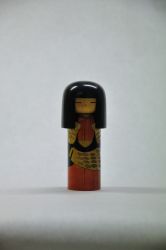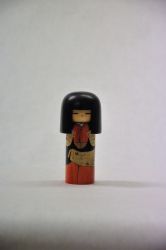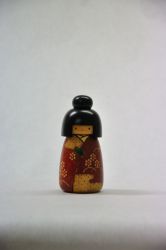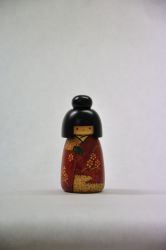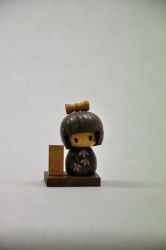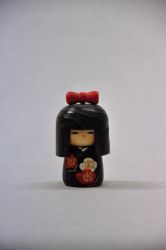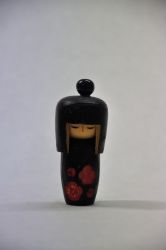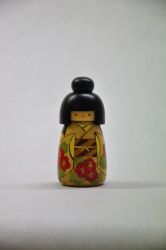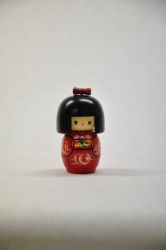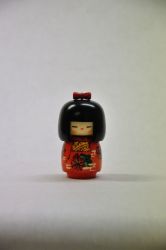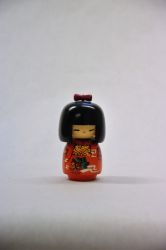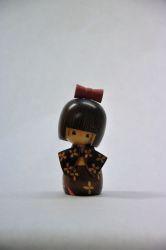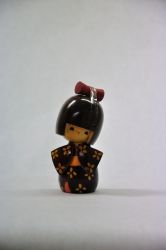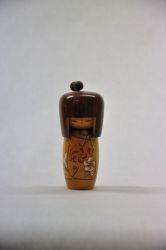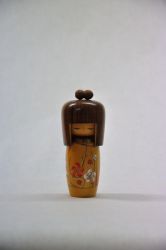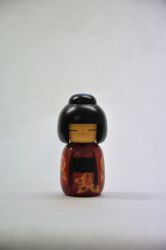Kokeshi
Kokeshi are traditional Japanese dolls from the northeastern region of Japan, the Tohoku region. They are made of wood and have no arms or legs. Originally, Kokeshi were a child's toy but they are now mainly used as decoration and as standing dolls in houses and flats.
The oldest written documents about the Kokeshi date from 1860 and were found in Sakunami Onsen (a hot spring resort) in the Miyagi prefecture. Through these documents we know that the production of Kokeshi had begun in the early 19th century. The oldest Kokeshi are from the Togatta Onsen and were sold as souvenirs of the hot springs. The reason for this is that many farmers visited the hot springs in wintertime in order to recover from the hard harvest time. There, they bought the dolls as gifts for their children. The idea came from the so-called kijishi 木 地 師. These kijishi were wood craftsmen who produced, trays and trays of wood using lathes. From the wood left over, they subsequently began to produce the Kokeshi dolls.
With the introduction of celluloid and mass-production of toys, Kokeshi dolls lost some of their popularity, especially with children. This popularity underwent a shift, however, in favor of adults, who re-recognize(d) the charm of the Kokeshi. Between 1955 and 1965, there was a veritable Kokeshi boom. There were not only tourists, but also collectors who were suddenly devoted to the Kokeshi and prices for such dolls increased astronomically. By the 2011 earthquake in the Tohoku region, sales of traditional Kokeshi plummeted as people became afraid to visit this region.
The production of Kokeshi is a long process. The wood is usually cut between autumn and spring, since it is the least humid at this time. The bark is removed from the timber, then the timber is suspended so that it can not bustle and dried for a half or even an entire year. Only then, the wood is cut into suitable pieces. For the preparation of the body and head, a lathe, Rokuro 轆轤 ,is used. Depending on the style and the artisans, head and body are made separately or in one piece. Finally, the Kokeshi are painted and coated according to the style with wax.
Regarding traditional Kokeshi, one distinguishes eleven different types: Hijiori, Kijiyama, Nanbu, Naruko, Togatta, Zao, Tsuchiyu, Tsugaru, Yajiro, Sakunami and Yamagata. They all differ in different facial features, body shapes and patterns. Modern Kokeshi, also called Sosaku Kokeshi 創作 こ け し , although they still retain elements of traditional Kokeshi, more often are distinctily more colorful and have several additional attributes (such as umbrellas, headdresses, etc.) and indicated (painted) arms. In this collection there are alsodolls from Korea (Ko176-185 and Ko276-281), Hokkaido (Ko274-275 and Ko293) and Kimmi Dolls (Ko338-363) which have great similarities with the Kokeshi.
